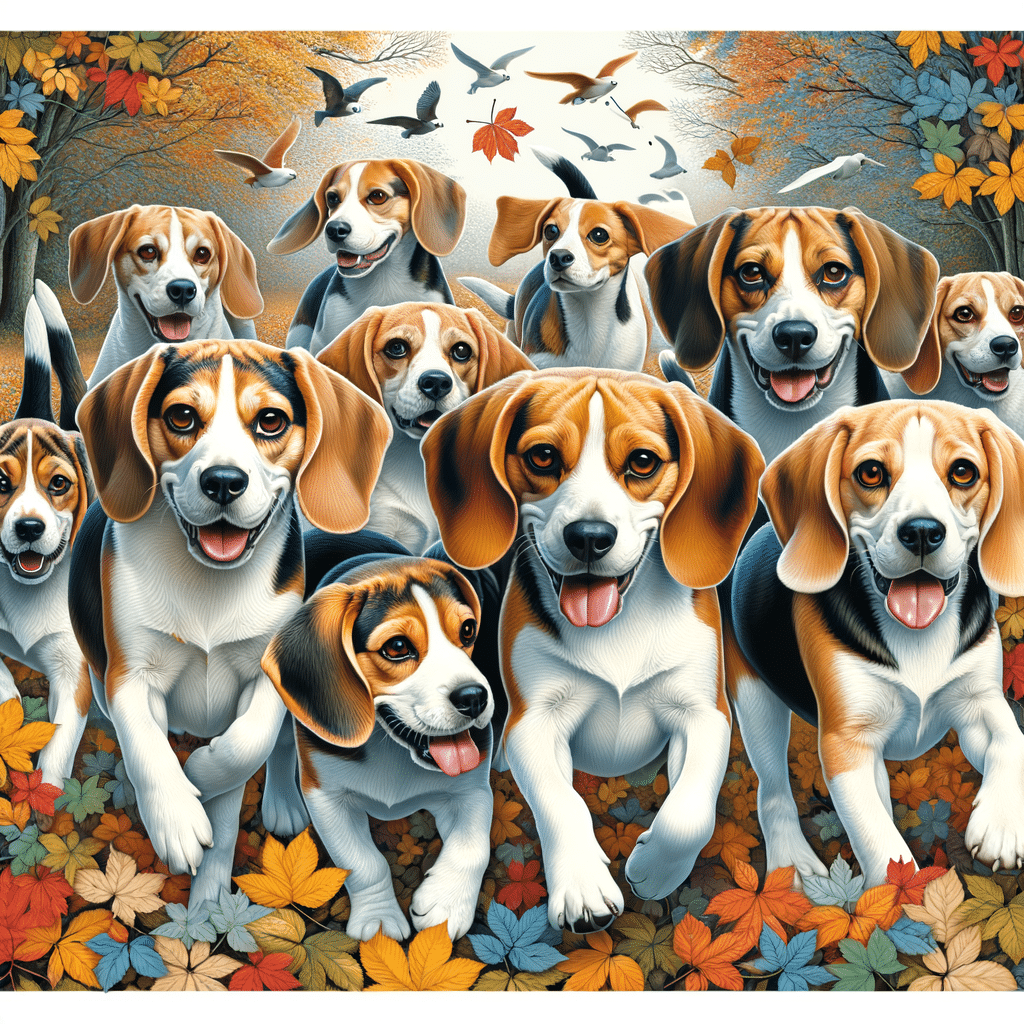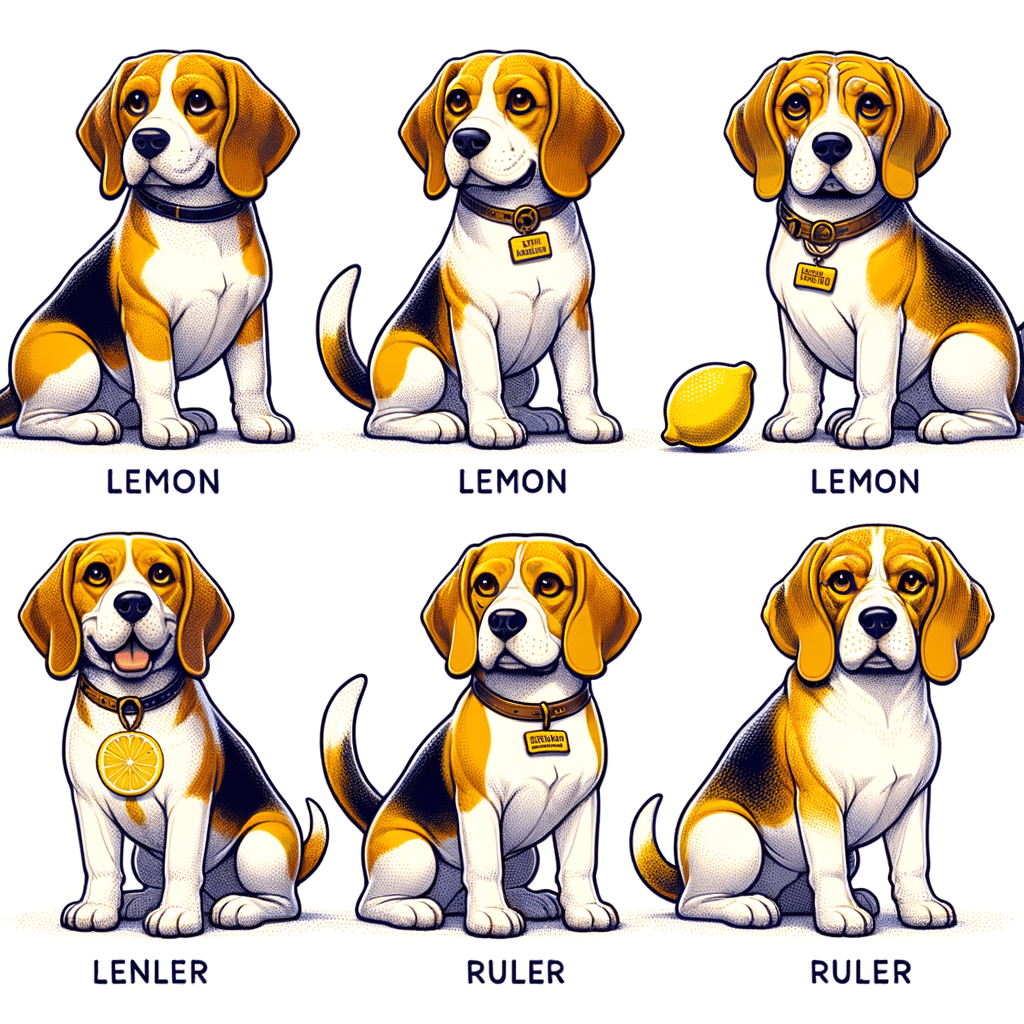Choosing the right dog breed can be a delightful yet challenging endeavor, as each breed has unique characteristics. When comparing a beagle vs. a Pomeranian, choosing your pet requires making an informed decision for the best results.
In This Article
The beagle has a friendly demeanor and excellent compatibility with children, making it a great family pet. On the other hand, the Pomeranian, with its vivacious and alert personality, works nicely for new dog owners, especially as a companion dog. However, Poms tend to have a lower tolerance for young children than the beagle.
When considering ownership of a beagle or Pomeranian, it’s essential to understand their care requirements and behavioral tendencies. beagles are generally easygoing and require regular exercise to maintain their health and happiness. The Pomeranian, while smaller in size, also needs exercise and mental stimulation. It has a higher maintenance coat that requires regular grooming from you or a groomer.
Both breeds are intelligent and can be a joy to train, but their temperaments and energy levels may vary. You should take this into account when assessing which breed aligns with your lifestyle.
Highlights
- Beagles are child-friendly and suitable as family pets. A Pomeranian is good for first-time owners as a toy dog.
- Both kennel club purebred dog breeds require exercise, with Pomeranians needing frequent grooming.
- Temperament and energy should be matched with an owner’s lifestyle.
Breed Characteristics
When comparing the beagle and Pomeranian breeds, it’s essential to address differences in size and weight, distinct temperament and personality traits, and their unique physical appearances.
Size and Weight
Beagle
- Height: 13-15 inches
- Weight: 20-30 pounds
Pomeranian
- Height: 6-7 inches
- Weight: 3-7 pounds
Beagles are notably larger than Pomeranians, and their sturdy build is suited for their original purpose as scent hounds. In contrast, Pomeranians are much smaller, classified as a toy breed, and light enough to be carried with ease.
Temperament and Personality
Beagle
- Friendly and gentle with children
- Sociable with a tendency to be curious
Pomeranian
- Ideal for active owners
- Alert and can be more reserved with strangers
The beagle demonstrates a nice temperament, making it an excellent family pet. They are known for their amiability and willingness to bond with children. Conversely, Pomeranians possess an energetic and lively personality, thrive in various environments, and are well-suited for attentive pet parents.
Physical Appearance
Beagle
- A coat that is typically short, dense, and weather-resistant
- Common color combinations include tricolor, red and white, and lemon
Pomeranian
- Features a fluffy double coat requiring regular maintenance
- A wide array of colors, with some common ones being orange, black, and cream
Beagles possess a robust and athletic appearance, with expressive eyes and long, hound-type ears. Their coats protect them in different weather conditions. Pomeranians are recognizable by their abundant, puffed fur and fox-like facial features, which require a fair amount of grooming to maintain their characteristic poof.
Care Requirements
When considering a beagle or a Pomeranian dog, prospective pet owners should understand the distinct care requirements for each breed. Grooming needs, exercise habits, and health considerations all differ between beagles and Pomeranians, impacting how an owner will need to care for their furry companion.
Grooming and Shedding
Beagles are relatively low-maintenance when it comes to grooming. They require brushing once a week to manage their moderate shedding and keep their coat healthy. However, they are known for their self-cleaning habits, minimizing bathing needs.
In contrast, Pomeranians possess a dense double coat that necessitates regular brushing, ideally a few times a week, to prevent mats and tangles. Shedding is more prominent in Pomeranians, and they often require professional grooming services. Owners must also pay attention to the cleaning of the Pomeranian’s eyes and ears to prevent infections.
Exercise and Energy Levels
Beagles are high-energy dogs that need plenty of daily exercise. At least an hour of activity each day is smart. This prevents obesity and keeps them mentally stimulated. Due to their hunting heritage, beagles enjoy activities that engage their smelling abilities.
Pomeranians, while active, have lower exercise needs than beagles. Short walks and play sessions are sufficient to meet their energy levels. However, owners should be cautious not to over-exert Pomeranians due to their small size. Feeding the right amount of dog food is key to maintaining health, too.
Health and Lifespan
Generally healthy, beagles have a typical lifespan of 10-15 years. They may be prone to certain conditions, such as hip dysplasia and epilepsy. As a pet parent, regular check-ups and a proper diet are important to maintain a beagle’s health, whether you have an older dog or a beagle puppy.
Pomeranians have a lifespan similar to beagles, averaging 12-16 years. However, they are susceptible to distinct health issues like patellar luxation and collapsed trachea. Other concerns include dental problems due to their small mouths and potential heart issues.
Each one is a popular dog breed that you should monitor for signs of common dog health problems, such as cataracts. As a small dog, both of them need regular veterinary care. A balanced diet and preventive care are keys to managing health risks. Still, you may want to consider buying pet insurance for peace of mind.
Behavioral Tendencies
When considering a beagle versus a Pomeranian, it’s important to look at their interactions with family and pets, trainability and intelligence, as well as barking and guarding tendencies. These characteristics can significantly impact their suitability for different home environments and owner experiences.
Interaction with Family and Pets
Beagles are known for their affectionate nature, often displaying a loving disposition toward family members. They generally get along well with kids and other pets, including dogs, due to their sociable and dog-friendly traits. As pack animals, they thrive on companionship and are rarely aggressive.
Pomeranians, while also affectionate and loving, tend to be more independent. They’re suitable for families but can be less tolerant of children if not socialized properly. They may show a reserved attitude towards other pets but still enjoy being part of a family unit.
Trainability and Intelligence
Both breeds are intelligent, but their trainability differs. beagles are smart but can be stubborn, which might challenge novice owners during training. Positive reinforcement and patience are key to training them successfully.
Pomeranians are eager to please and, thus, generally easier to train, benefiting novice owners. Their alertness and responsiveness make them capable learners, though they can have occasional stubborn moments.
Barking and Guarding
Beagles have a strong prey drive and are inclined to follow their noses, which can lead to barking when they pick up an interesting scent. They’re not typically considered good guard dogs but can be effective watchdogs due to their alertness.
Pomeranians tend to bark more frequently, which is part of their nature as watchdogs. Despite their small size, they can be quite bold and will alert their owners to any perceived threats, making them suitable for apartment living as long as barking is managed.
Suitability for Owners
When selecting a canine companion, suitability for the owner’s lifestyle is a critical factor to consider. Both beagles and Pomeranians possess qualities that can make them ideal pets, depending on the owner’s circumstances and experience.
Family Dogs & Children
Beagles are renowned for their affability and are generally very kid-friendly. Their sturdy build and even temperament make them excellent family dogs. Pomeranians also can be good with families but may not tolerate the inadvertent roughness of younger children as well as beagles.
Apartment Living
Pomeranians are small, making them better suited for apartment living. They require less space and can be comfortable in smaller environments. Beagles, on the other hand, are more active and may need more room to move around, although they can adapt to apartment living if they receive adequate exercise.
Novice Owners
Due to its smaller size, the Pomeranian may be slightly easier to manage for novice owners. However, both breeds are considered relatively dog-friendly and pet-friendly, making them suitable for first-time dog owners.
Exercise Needs
Beagles require more exercise and enjoy activities that engage their keen sense of smell. Pomeranians require regular exercise, too, but their needs are less demanding, making it a bit easier to keep them physically satisfied.
When considering allergies and aggression, neither breed is known for high levels of aggression, though socialization is important to ensure good behavior with other dogs and people. In terms of allergies, Pomeranians have dense coats that may require more grooming to manage shedding, while beagles have shorter coats but still require regular grooming.
Choosing between a beagle and a Pomeranian often depends on the potential owner’s willingness to meet the exercise demands of a beagle and the grooming needs of a Pomeranian, in addition to considering the suitability of each breed’s temperament for their household.
Frequently Asked Questions
This section addresses common inquiries regarding the differences and considerations when comparing beagles and Pomeranians, providing a clear understanding of each breed’s characteristics.
What are the size differences between beagles and Pomeranians?
Beagles typically stand about 13 to 15 inches tall and weigh between 20 and 30 pounds, while Pomeranians are much smaller, usually standing 6 to 7 inches tall and weighing between 3 and 7 pounds.
How do the temperaments of beagles and Pomeranians compare?
Beagles are known for being friendly and outgoing, often getting along well with children and other pets. Pomeranians are also friendly, but they often are reserved and may not be as tolerant with young kids, valuing their free space and the attention of their owners.
Can beagle and Pomeranian breeds coexist peacefully?
With proper introduction and socialization, beagles and Pomeranians can coexist peacefully. Both breeds have sociable traits, but their size difference requires supervision to ensure playtime remains safe.
What are the challenges of owning a beagle?
Owning a beagle can be challenging due to its strong sense of smell and tendency to follow its nose, which can sometimes lead to wandering. beagles also require ample exercise and mental stimulation to prevent boredom and destructive behavior.
How intelligent are Pomeranians compared to other dog breeds?
Pomeranians are quite intelligent and respond well to training. However, they can be independent-minded, which sometimes presents a challenge. They are adept at learning tricks and thrive on mental stimulation.
What should one expect when considering a beagle and Pomeranian mix?
When considering a beagle-Pomeranian mix, one should expect a medium-sized dog with a variable temperament. The dog could potentially show a combination of independence, friendliness, and an energetic nature. The dog will likely require regular exercise and mental engagement.






